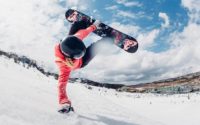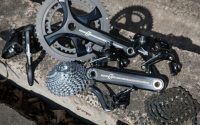Your Next Custom Board: Important Things to Get Right for Optimum Performance
Snowboarding is a fun sport that requires a lot of practice. It is easy to learn how to snowboard and can be mastered with enough time and dedication. The sport became popular in the late 1980s when people in the United States began using skis attached to a surfboard-like plank. This helped make it easier to stay on top of the snow instead of sinking into it. The use of these snowboards led to the development of snowboarding as we know it today. Today, most professional snowboarders have their own sponsors and earn money from competitions and endorsements. Some people have made lots of money from snowboarding, earning over one million dollars per year.
Getting Started

Snowboarding, like any extreme sport, is not for everyone. It requires a certain personality to want to slide down a mountain at high speed, standing on what amounts to a piece of plywood with sharp edges. Snowboards are like shoes in that regard: some people just don’t want to walk around on the equivalent of a cheese grater.
To snowboarders, though, their board is an extension of their body. It is natural, that they want their boards as customized as possible: with graphics and different shapes and sizes and colours and styles. Customization gives you an identity; it shows other people who you are and what you care about.
Your New Board Will Help You Ride Better
You find this puzzling. How can having a new snowboard make you ride better? It doesn’t seem like knowledge would help much. If you know how to ride it, why would that make any difference? But what does “knowing how” actually mean? It means knowing where on the board to put your weight, when to turn and what angle to turn at — in short, a bunch of parameters. That’s not so different from the situation with cars or computers.
If you want to learn how to snowboard, there’s no better way to start than with a new board. Your old one could be holding you back. It was made for an earlier era of snowboarding, when things were different. The people who made it don’t make boards anymore. Now, it might seem strange to say that a board could be holding you back, but when you use one that isn’t right for you, it makes it harder to learn. You have to work harder and think more about what you’re doing, just to get less done. And in the end, your performance suffers too.
You’ll Get Satisfaction in Knowing That Your Gear Is Uniquely Yours

Many factors can affect the choice of a custom snowboard. First of all, you have to think about the types of riding you’re going to do. Is it for daily commuting, downhill racing, freeriding, or simply cruising? As much as you would like to think that the best board is made out of the best materials, that is just not true. The best custom snowboard is made out of components that are tailored to your specific needs.
Materials are important, but they do not make the board. For instance, if you want one that excels in technical tricks and fast freeride, then you will want to go for a deck with a stiffer flex and shorter wheelbase. If you want a cruising board with lots of pop, then you will choose one with a softer flex and longer wheelbase.
As far as wheels go, the urethane formula will depend on what you want to use your equipment for. Faster wheels are harder and grippier while slower wheels are smoother and more durable. Also take into consideration how heavy of a rider you are, because heavier riders tend to need softer wheels in order to get sufficient grip on the road; lighter riders can take advantage of faster, grippier wheels because they have more balance and experience.
What to Consider When Buying a Snowboard

The most important things to consider when buying one are:
- Your skill level and riding style
- The size of the board
- What you will be using it for. There are other things to think about, but those are the main ones.
If you want to jump in a half-pipe you will want a different snowboard than if you just want to cruise around on trees and maybe hit some small jumps. If you have never boarded before, then there is a great variety of boards that are specifically designed to be easy to use.
The width and the length should be considered first when deciding what kind of equipment you need. The width of the board is important because it determines how easy it is to turn. The length of it is important because it determines how stable it is at speed.
There are three basic materials that snowboards are made out of: wood or fibreglass (which may also contain plastic), foam/rubber/plastic sandwich, and metal (aluminium or carbon fibre).
How to Choose the Right Size

Snowboarders, like skiers, are often pretty serious about their sport. They spend a lot of time, effort and money to get the right equipment. But lots of people who own a snowboard have never been on a hill. They bought it because either someone told them it was cool, or they thought it would be a good way to meet other people.
Beginners need softer equipment with more control. If you will be mostly on man-made snow, such as an indoor slope or a skating rink, then many snowboards will work fine for you. If you will be riding on natural slopes in the wintertime, then your snowboard will have different properties depending on where you live.
So, here’s some advice:
- Get a board you like the look of
- Get one that fits: get it sized and shaped for your body, even if it means waiting until the end of the season before you buy it
- Get it from a shop you trust.
- Don’t get too hung up on “high-end” boards compared to cheaper ones (or vice versa). A good board will last you years if you take care of it.
- Don’t be afraid to try new things, but don’t lose sight of what you’re trying to do – have fun!



